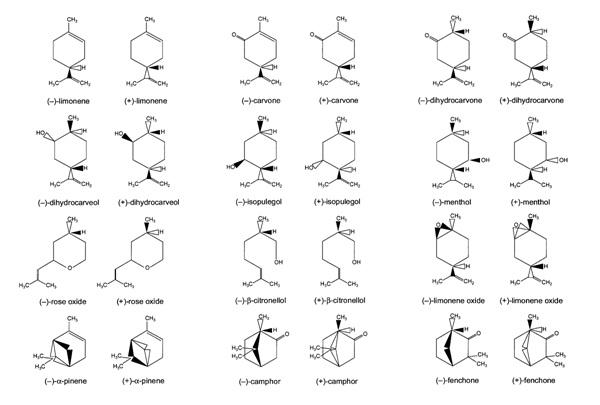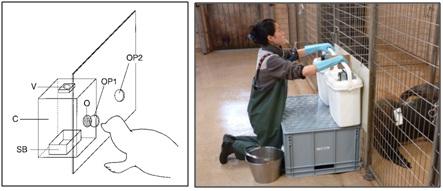Animals and Odorants
• Four female South African fur seals (Arctocephalus pusillus) were tested at Kolmården Wild Animal park, Sweden.
• A set of 12 enantiomeric odor pairs was used.

Behavioral test
The test was based on an operant conditioning. In a previous study the animals had learned to sniff at two odor sampling ports and then to indicate which of the two options held the rewarded stimulus by poking their nose into the corresponding sampling port.
The animals recieved 5-8 training sessions (one form of enantiomer vs. pepper oil) prior to 4 critical sessions (the (+)-form of enantiomer vs. the (-)-form of enantiomer).

Data analysis
- The percentage of correct choices out of 40 trials for each animal was measured. By two-tailed binomial test, two level of criterion were set at 72.5% correct choices, p<0.01, and at 67.5% correct choices, p<0.05.
- As for the performance at the group level, at least 3 animals had to reach the criterion
- Comparisons of performance across individuals were made using the Mann-Whitney U-test for independent samples.
Responsible for this page:
Director of undergraduate studies Biology
Last updated:
04/23/12
